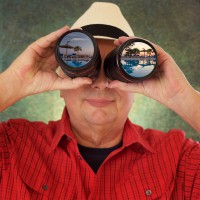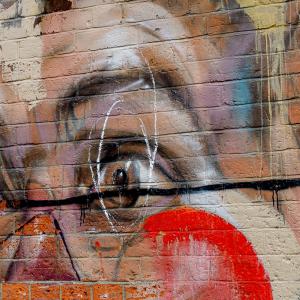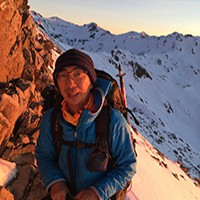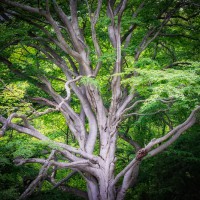SEARCH






|
|
|
|


"Machines will be capable, within twenty years, of doing any work a man can do.” ~Herbert A. Simon (1965)
In July 2023, I attended in an AI research forum. An Amazon researcher introduced to us several AI projects currently undertaken at Amazon. During the event, we had lunch together. When she learned that I was also a photographer, she bluntly said to me: "Midjourney ended photography!"his statement, her words present the view of many professionals engaged in the cutting-edge research on generative AI. In this article, from the perspectives of both as an AI scientist and as a professional photographer, I try to thoroughly explore the profound impact that generative AI is having on traditional photography; and how we, as photographers, should face it to this challenge.
Next week: Part 5 - Ownership and 'Content Authenticity'
2023 is the first year that generative AI has great impact on photography.
According to a poll conducted by IMAGO in May 2023, 67% of photographers said they would refuse to use any generative AI soiware to improve their photography postprocessing workflow.
Many photographers and artists believe that their work is being used to train AI models without their consent, thus infringing on their copyrights.
In April 2023, the well-known photography online gallery 1x.com announced that the website would not accept any images generated by AI.
However, these resistance to generative AI have not alleviated the anxiety of traditional photographers about this new technology. On the contrary, the rapid development of generative AI technology has brought more confusion to photographers.






For example, as you can see from the above screenshot, the last sentence of the new rules added in ILP 2023 says: “Of course, you could use a camera to capture a pond or rose bushes and composite them into the photo yourself – that’s okay because the content wasn’t generated by AI.”
To put it simply, these rules are equivalent to say: as long as it is not generated by AI, you can do whatever you want.
People may ask: Since the competition organisers have no requirements for the authenticity of the entries themselves, why are they so resistant to AI-generated content?
Secondly, and most importantly, how can the judges of these competitions know whether an entry is AI-generated, or whether it has AI-generated elements?
Since the organizers of these photography competitions will not require participants to provide the original RAW files of their entries, these new rules restricting AI images are actually not feasible.
On November 19, 2023, photographer Alex Armitage published an article on the fstoppers website and made the following comments on the rules of ILP2023:

Armitage wrote: “However, like many contests, they don’t do raw image verification. The lack of any raw verification is quite standard among most contests. Thus, how would you actually know if AI was or was not used?”
In contrast to those organized by mainstream photography competitions, some regional photography competition organizations are completely open to generative AI. For example, the rules of the 2024 Brisbane Portrait Prize QPP just announced:

Mini AI knowledge:
Several platforms that support Stable Diffusion:
Online platform DreamStudio: This is a web app provided by Stability AI. For users who do not want to install the Stable Diffusion platform on their personal computers, they can directly run Stable Diffusion v1.6 and Stable Diffusion XL v1.0 online. It is intuitive and simple to use. However, its functionality is quite limited and cannot be compared with other local platforms.
Automatic1111: This is a Stable Diffusion platform based on a browser interface and can run under different operating systems. Therefore, whether you are using PC, Mac, or Linux station, you can run Stable Diffusion and Stable Diffusion XL locally by installing Automatic111. Full information on installing Automatic1111 can be found on the github website.
ComfyUI: This is a Stable Diffusion platform based on node processes. The interface is very different from Automatic1111. It can also run under different operating systems. The biggest advantage of ComfyUI is its high degree of computation optimization and user customizability. Whether running SD v1.5 or SD XL v1.0, ComfyUI is much faster than Automatic1111 (average 3-5 times according to testing). Again, full information on installing ComfyUI can be found on the github website. The only drawback is that it takes more time to learn and master.
 | Write |
 | Raad Btoush PRO Amazing work, Ahmed! |
 | Alessandro Traverso PRO I don't have Photoshop, so I don't run the risk of polluting my passion with generative AI. Photographs are born by interacting with the world, my passion is to capture the unpredictable, the random, what I had before my eyes and did not see. A photo of me reminds me of a place, a moment, a person, a real situation that belongs to me. The variety of reality is infinitely greater than the content of any database. If I post a photo of a storm I hear the roar of the sea, the splashes of the waves that also wet my equipment, the emotion and satisfaction of having managed to capture that moment.
Are certain images indistinguishable from photographs? They are, however, fraudulent wrappers and those who pass them off as photos know it well, it doesn't matter if others don't know, boasting about skills you don't have undermines the dignity of those who do it.
A person's credibility is worth much more than the likes they get on social media.
|
 | Miro Susta CREW Nicely said Alessandro, fully agree with you. |
 | Udo Dittmann PRO II have sympathy for the author and a strong interest in the subject. Nevertheless, I find the publication of a scientific article in 6 parts in the magazine of a website for sublime photography annoying. I would have expected Yan to give us a summary of the topic in one (1) article as a further basis for discussion. In my opinion, a reference to the complete article on the web would have been useful and sufficient for anyone interested in the topic. As it is, the information and all our comments are scattered over 6 articles, which is detrimental to a common, objective discussion. |
 | Chris Hamilton PRO Interesting article and thought provoking i have tried firefly on photoshop and its so easy to create a masterpiece but the skill is still capturing the moment itself and editing with normal tools if you take this away do we need to buy any camera equipment or travel to take photos at all. |
 | Yan Zhang CREW Thank you all for continuing reading this article, there are two more parts to be presented in the following weeks. Have a good weekend. |
 | Cristiano Giani PRO Good morning everyone.
I ask as an AI inexperienced: will it still make sense to buy an expensive camera, and above all a, let's say, medium format camera, rather than an APSC camera?...... |
 | Miro Susta CREW Very good question, my answer is yes if you are a phographer and if you taking photographs because you like it, because you documenting your life stories, capturing interesting land- or city scapes, street life, actions and similar which can not be created by AI.
If medium or other type of camera? This is depending on your requirements and expectations. |
 | Cristiano Giani PRO ...yes, Miro, i completely agree... |
 | Benno Klier Yan, thank you very much for providing the previous 4 articles about how AI is impacting photography, an extremely interesting and important topic.
Some thoughts:
1. It is obvious that whatever measures will be taken to attempt identifying if (a submitted) photograph is not, is partially, or is completely created by using generative AI tools, will always suffer from insufficiencies – it is the same game as with hackers, who are always a step ahead of all currently applied measures.
2. Personally I perceive generative AI tools for creating images as a new possibility how to be creative in Imaging and to explore possibilities that are not possible with classic photography. I understand that “creating” really appealing AI images, very good knowledge and experience of how to write prompts properly is required (as long as the input is described in textual form, using relevant keywords and phrases), including very detailed knowledge of the respective AI tools to get the most of them. Soon the input may also be spoken language instead of text.
3. Due to the rapidly increasing speed how generative AI tools are progressing in terms of quality and possibilities, the results from a certain (near) point of time probably couldn’t be distinguished from a real photograph (“real” = taken with camera and lens) anymore - this includes also scaling to desired output size with high detail.
4. As a conclusion from points 1. 2. and 3. it may be a (near future) approach or model for 1x.com to introduce 3 new fundamental high-level photographic areas or domains, where the respective published images are then classified in the usual (photographic) genres:
a) real photographs with no content created via generative AI tools
b) real photographs partially manipulated via generative AI tools (hybrid image)
c) image content entirely created via generative AI tools
5. Aside from classic domain a) I would be highly interested to see images submitted in domains b) and c) and learn what could be achieved. The user who is submitting his work is of course responsible to submit into the correct domain - In the end, it is all a question of trust and responsibility.
|
 | Yan Zhang CREW Dear Benno, thanks for reading this article and providing your comments. I agree with most of your points, that 1x should embrace AI instead of rejecting it, as a world top photography online gallery. Adding a new category of AI generative images or photos processed with generative AI tools, will encourage people for both sides - those who are interested in applying advanced AI technology into photography; and those who want to keep in the classic photography. It is very clear that very soon, humans will not be able to distinguish images generated by AI and taken by cameras, so it does not make much sense to declare that the entire 1x site only publishes "real photos", because no one can really verify that. Providing a separate image category, giving people who are interested in AI a space to explore their creativities applying generative AI tools in photography. |
 | Benno Klier Dear Yan, thank you very much for your response! I agree with all of your points and I believe that openness and flexibility is the better option compared to restrictive measures and control mechanisms. |
 | Miro Susta CREW Dear Yan, I was carefully reading all four Parts. Now my question to you, is this Part 4 the last part in these series? If yes then I am very disappointed because I'm missing the summary/conclusion. I hope that you understand my concern. |
 | Udo Dittmann PRO There will be at least 1 more article - you can read the entire text at
https://www.deepmountain.com.au/blog/revisiting-generative-ai-and-photography
I'm just curious to see when Ralf and Jacob will comment on this. |
 | Yan Zhang CREW Hi Miro, As Udo said, this is NOT the last part of this long article. Two more parts will be presented in the following weeks. Please be patient. |
 | Giuseppe Satriani PRO Yan I fully agree with your point of view. You have been perfect in highlighting the current incredible contraddictions existing in the photography world! It is just a question of time...and the 67% of resistance will progressively go down up to 5%...in any case the basic question still make sense: Photography and AIgraphy are two different ways to create visual art...should we keep them separate? Which is the % of AI generated part of a photography that transform it in a AIgraphy? |
 | Yan Zhang CREW Dear Giuseppe, thanks for your comments. Personally, I will keep photography and AIgraph separate. But this will not affect the progression of how AI will influence the current photography industry. I think the no matter we like or dislike, most photography tools including camera, post processing software, etc., will be more and more embedded with AI technologies, and every photographer will have to use these tools for his/her photography work. In this case, how we can still remain our works to be the pure photography, it is hard to say.
About your second question, now some photographers said: using AI sharpening is OK, using AI to remove spots is OK, using AI to blurred unwanted background is OK, etc., the list can be very long. So far, one common agreement amongst many photographers is that: during the post processing, as long as not using AI to create non-exist objects, that is OK. But I have a question about this boundary, because this is too vague to define what is AIgraph and what is photograph. My next part of the article (next week) will address this issue.
Have a good weekend. |